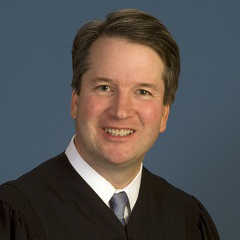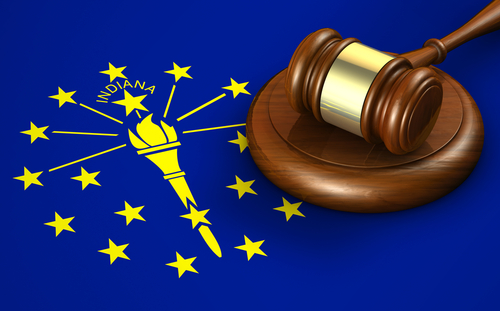ABA committee to evaluate Trump’s Supreme Court pick Kavanaugh

Judge Brett Kavanaugh.
President Donald Trump praised Judge Brett Kavanaugh’s "impeccable credentials" and "unsurpassed qualifications" when he nominated Kavanaugh on Monday to replace Justice Anthony M. Kennedy on the U.S. Supreme Court.
Now that Kavanaugh is in the spotlight, attention has turned to previous evaluations of his qualifications when he was nominated to the U.S. Court of Appeals for the D.C. Circuit by President George W. Bush.
The ABA Standing Committee on the Federal Judiciary has conducted nonpartisan evaluations of federal judicial nominees since 1953, examining each nominee on their professional competence, integrity and judicial temperament. Judicial candidates are rated as “well-qualified,” “qualified” or “not qualified.” The evaluation process is confidential, but the ratings are made public for all official nominees, along with whether the ratings were given by unanimous vote. An in-depth explainer on the committee’s evaluation process can be found here.
The committee has evaluated Kavanaugh three times previously. President George W. Bush, who like Trump chose not to involve the committee in the prenomination process, nominated Kavanaugh to the U.S Court of Appeals for the D.C. Circuit in 2003, 2005 and 2006. Each time Kavanaugh was renominated to the D.C. Circuit, the committee (whose members serve staggered three-year terms) performed a supplemental evaluation to examine any new developments and interview additional people who could speak to Kavanaugh’s qualifications. The committee will conduct another evaluation now that he’s been nominated to fill Kennedy’s seat, examining his judicial record since 2006 and conducting fresh interviews.
The standing committee gave Kavanaugh a well-qualified rating by a substantial majority when he was nominated to the D.C. Circuit in 2003 and in 2005, then rated him as qualified in a new review in 2006. That year, a substantial committee majority gave Kavanaugh a qualified rating, while a minority gave him a well-qualified rating.
While the full compilation of evaluation materials are confidential, the chairman of the committee will provide written statements to the Senate Judiciary Committee when requested, to elaborate on the reasoning behind a candidate’s rating. In 2006, the then-chairman of the committee, Stephen L. Tober, was asked to explain how Kavanaugh’s rating had changed. The change was not due to turnover among the committee members, Tober wrote, because six committee members who had previously rated Kavanaugh as well-qualified had downgraded their ratings to qualified after a supplemental evaluation.
See also: Meet Brett Kavanaugh, Trump’s nominee for the Supreme Court
Tober informed the Senate Judiciary Committee that a substantial majority still believed that Kavanaugh was “indeed qualified” for the bench, and he “enjoys a solid reputation for integrity, intellectual capacity and writing and analytical ability.”
The concern, Tober said in his May 2006 statement, “has been and remains focused on the breadth of his professional experience, and the most recent supplemental evaluation has enhanced that concern.”
In his written testimony, Tober outlined how the initial evaluation and two supplemental evaluations had been conducted. In 2003, the standing committee contacted 55 people for information about Kavanaugh. The number of contacts expanded to 91 in 2006. Not all of the 2003 contacts were repeated, and more people were found who had crossed paths with Kavanaugh, Tober said.
Some concerns arose in 2003 about Kavanaugh’s experience. At the time, he had never tried a case to verdict or judgment, his litigation experience was in the company of senior counsel, and he had little experience with criminal cases.
Additional interviews in 2006 amplified those concerns, Tober said. One judge who witnessed an oral argument said Kavanaugh’s performance was “less than adequate,” demonstrating experience on the level of an associate. In addition, the judge reported that Kavanaugh appeared “sanctimonious,” Tober said. A lawyer who observed Kavanaugh in court reported that he “did not handle the case well as an advocate and dissembled.”
The 2006 interviews also raised a new concern involving judicial temperament, Tober said. Several people suggested that Kavanaugh was “insulated,” though one person acknowledged the concern might be due to Kavanaugh’s then-position as staff secretary to President George W. Bush. Another person said Kavanaugh was “immovable and very stubborn and frustrating to deal with on some issues.”
All interviews with the Standing Committee on the Federal Judiciary are conducted under strict confidentiality, so the identities of the people who made these comments were not disclosed.
The Senate voted 57-36 to confirm Kavanaugh’s nomination to the D.C. Circuit on May 26, 2006.
Kavanaugh worked in the White House from 2001 to 2006. Before that, he had clerked for two federal appeals judges and for Kennedy on the Supreme Court, according to his official bio. He was a partner at Kirkland & Ellis, had worked for independent counsel Ken Starr, and was a lawyer in the U.S. Solicitor General’s office.
Kavanaugh has argued one Supreme Court case, Swidler & Berlin v. United States (1998), on behalf of the government. The Supreme Court ruled in favor of Swindler & Berlin, saying that attorney-client privilege protected the notes of the lawyer for deputy White House counsel Vincent Foster before Foster committed suicide.



